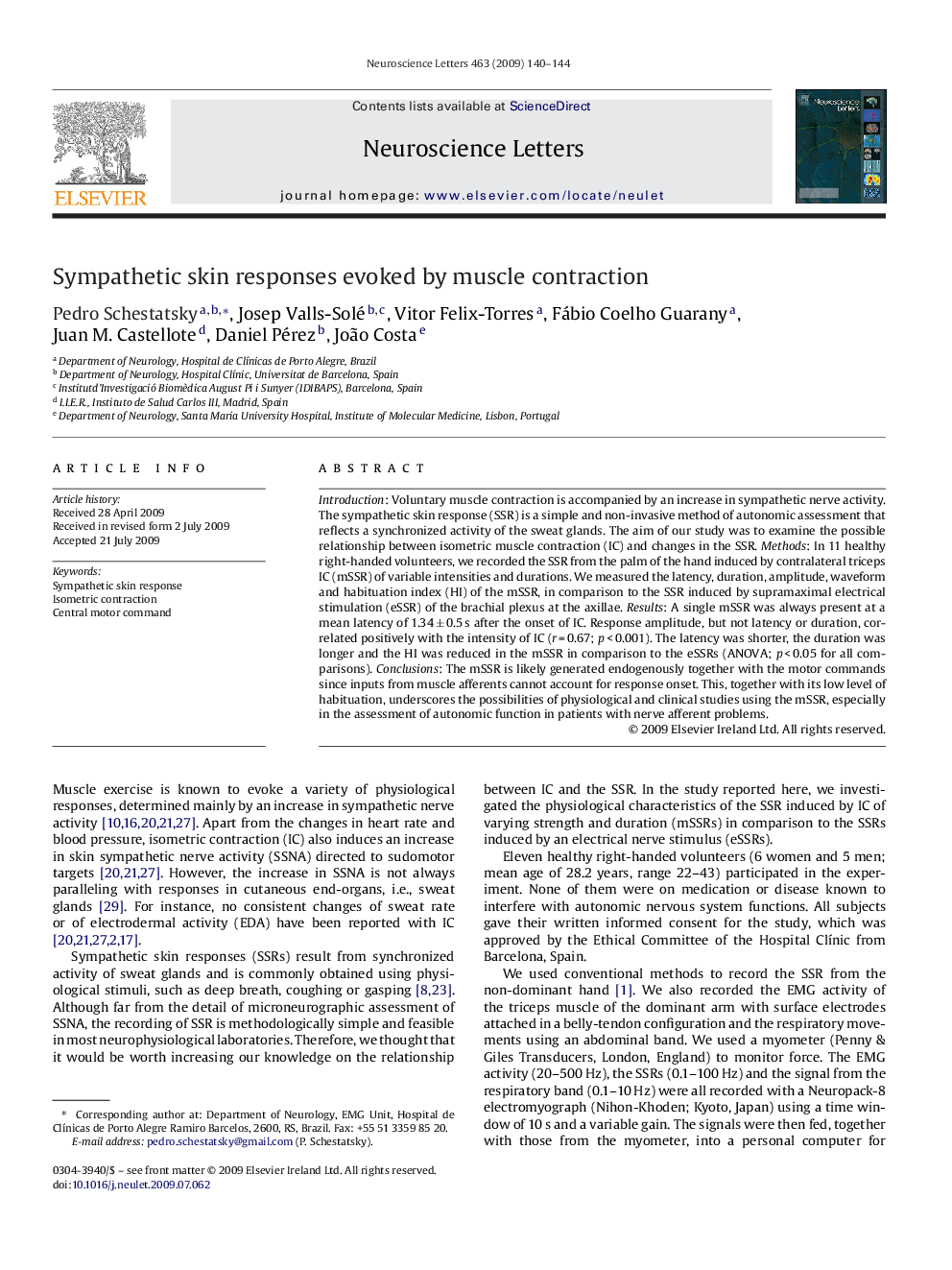| Article ID | Journal | Published Year | Pages | File Type |
|---|---|---|---|---|
| 4346628 | Neuroscience Letters | 2009 | 5 Pages |
Introduction: Voluntary muscle contraction is accompanied by an increase in sympathetic nerve activity. The sympathetic skin response (SSR) is a simple and non-invasive method of autonomic assessment that reflects a synchronized activity of the sweat glands. The aim of our study was to examine the possible relationship between isometric muscle contraction (IC) and changes in the SSR. Methods: In 11 healthy right-handed volunteers, we recorded the SSR from the palm of the hand induced by contralateral triceps IC (mSSR) of variable intensities and durations. We measured the latency, duration, amplitude, waveform and habituation index (HI) of the mSSR, in comparison to the SSR induced by supramaximal electrical stimulation (eSSR) of the brachial plexus at the axillae. Results: A single mSSR was always present at a mean latency of 1.34 ± 0.5 s after the onset of IC. Response amplitude, but not latency or duration, correlated positively with the intensity of IC (r = 0.67; p < 0.001). The latency was shorter, the duration was longer and the HI was reduced in the mSSR in comparison to the eSSRs (ANOVA; p < 0.05 for all comparisons). Conclusions: The mSSR is likely generated endogenously together with the motor commands since inputs from muscle afferents cannot account for response onset. This, together with its low level of habituation, underscores the possibilities of physiological and clinical studies using the mSSR, especially in the assessment of autonomic function in patients with nerve afferent problems.
